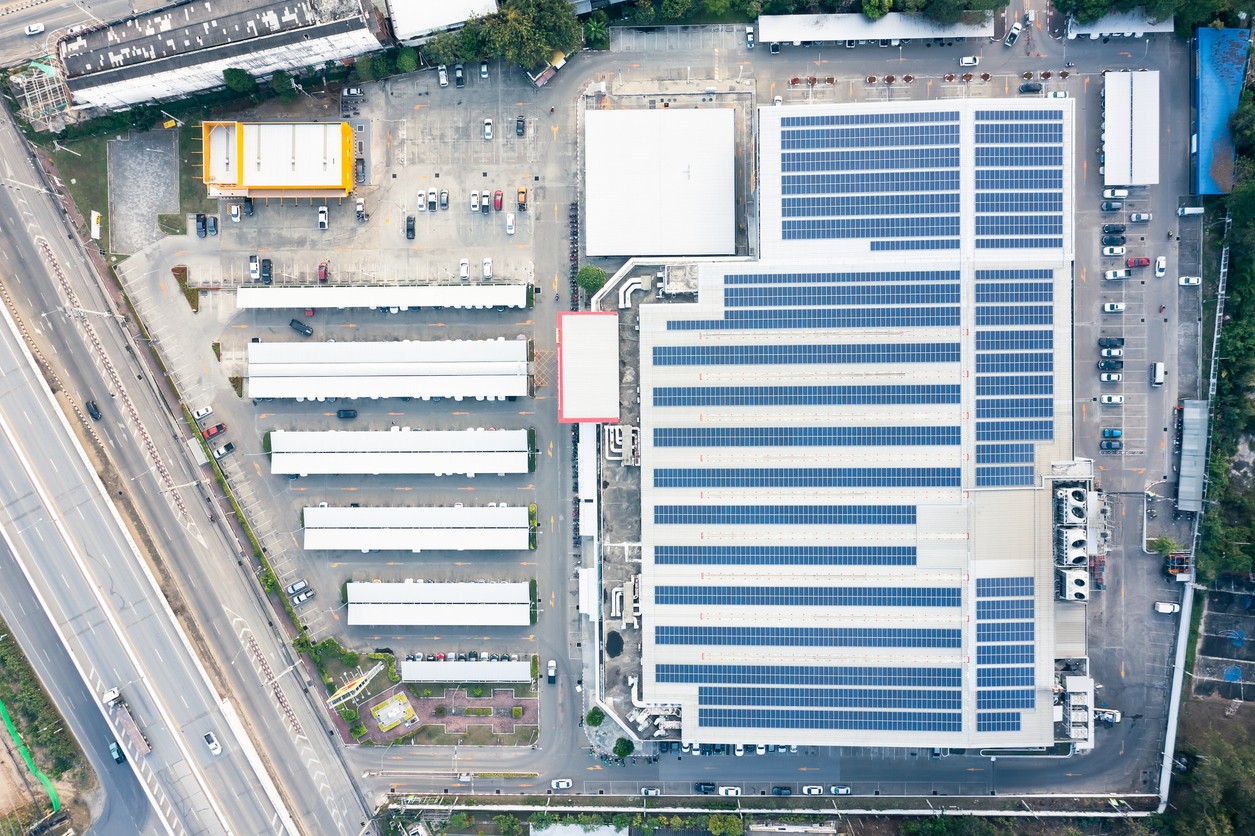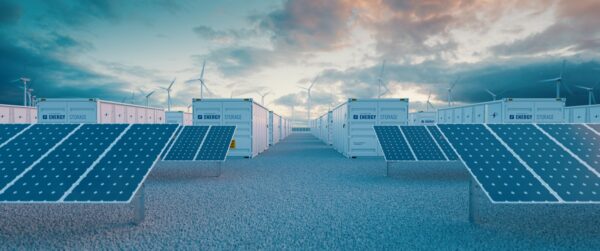
Solar panel systems harness the sun’s energy to produce a high amount of electricity. At a high level, photovoltaic cells or solar cells absorb sunlight falling on them to generate electrical current by going through different steps. The current produced is called the photovoltaic effect. Additionally, the electrical current is captured by wires and plates and transforms into usable electrical energy sent to your property or factory.
To help you understand how a commercial solar system produces energy, we have discussed the steps to generate electricity. Also, if you need to improve the efficiency of solar panels, we have mentioned some tips to optimize your system. So, let’s read further to get the most out of your solar system.
How Does a Commercial Solar System Work?
Step#1: The panel gets activated by sunlight
Solar panels are made from layers of silicon cells, a glass casing surrounded by a special film, a metal frame, and wiring. To increase efficiency, panels are installed in ordered series and placed on large outdoor spaces or rooftops. Also, the solar cells or photovoltaic cells present on the solar panel absorb sun rays during the daytime.
Step#2: Solar cells produce electricity
Each solar cell contains a semiconductor wafer constructed from two layers of silicon. One is negatively charged, and the other is positively charged, creating an electric field. When sunlight falls on the photovoltaic solar cells, it triggers the cell and loosens electrons in atoms present in the semiconductor wafer. Furthermore, these electrons start to move due to the electrical field surrounding the wafer, which produces an electrical current.
Step#3: Converts electrical energy
At this stage, your commercial solar system has successfully transformed the sun’s rays into electricity. However, this generated electricity can’t be used and is known as direct current or DC electricity. DC can’t power factories or offices and need to transform into AC or alternating current.
For this, you need to convert DC electricity into AC electricity with the help of an inverter. Based on your solar panel system, you can install a single inverter that can work for the entire system. Some commercial solar panels also include micro-inverters linked to panels to convert electricity.
Step#4: Use converted electricity
When the solar energy is converted from DC to AC electricity, it is distributed to the property to power lights, machines, and other electrical items inside the premises. Solar energy works the same way as electricity distributed by your local electric utility company.
Therefore, you don’t need to change machines, appliances, or other electrical products to use solar energy. Another thing to note is that since your commercial property will stay connected to a traditional power company, you can use their electricity if you face any solar shortages.
Step#5: Benefit from meter measures
Suppose one day, your solar panels or shingles can not absorb energy from the sun due to a cloudy day or rain. In this case, you can use surplus energy. To be more precise, when you produce more electricity than you need to run the company, you can send the electricity to the utility company’s grid. In return, your local electricity-producing company will offer you credits.
So, this way, you can get electricity in time of need from the company without worrying about anything. This entire process is known as net metering. If you plan to benefit from this feature in the future, you need to install a smart electric meter. You can use this meter to learn how much energy flows to and from your property.
How to Optimize Your Solar Panel Output
1. Install a solar battery
We know solar panels can only generate energy when the sun shines. But this doesn’t mean you can’t power your property at night or during cloudy days. Solar panels are needed to be installed with solar batteries that store energy, allowing you to use electricity 24/7, even when sunlight is scarce.
A few years ago, companies with solar had to switch to the power grid at night for electric items on the property. Thanks to the technology, you can maximize the efficiency of your solar system by storing the extra energy produced.
2. Install a high-quality commercial solar system
Solar panels are made of photovoltaic cells. These are the cells that transform sun rays energy into electricity. But it is important to note that solar systems can’t convert all the solar energy into electricity. This is why the efficiency of solar panels is important to get the most out of them. Note that efficiency is the percentage of the sun’s rays falling on the panels that photovoltaic cells convert into energy.
Solar technology has improved in the last few years, and some companies have improved their efficiency from 15% to 20%. Additionally, the structure and materials of solar panels decide their efficiency. While it’s true that the initial cost of solar panels is expensive, opting for a more efficient model can offer you better results, leading to higher savings.
3. Keep your commercial solar panels clean
Regular maintenance and cleaning are essential. Dust and debris collected on the solar system are not good. Also, dust that turns into hardened mud because of moisture exposure can significantly damage the solar panels and impacts their efficiency. Both of these situations block the sun’s rays from reaching photovoltaic cells.
Cleaning the entire solar panel system is not an easy task. You will need the help of experts who can asses their condition and clean it accordingly. Hiring a trained expert for this will help you reduce the risk of damaging solar panels while cleaning. Also, it eliminates the risk of getting burned or struggling with any injury while lifting or moving the solar panels.
4. Install commercial solar panels with CPV cells
You need to look for solar panels with highly concentrated photovoltaic (CPV) cells. The primary objective of CPV is to focus sun rays on the highly efficient solar cell that will be otherwise extremely costly to use directly. If you opt for the best traditional solar panels, they will not offer you an efficiency of more than 22%. In the case of CPV panels, you can expect an efficiency of more than 46%.
Keep in mind higher efficiency comes with a significant price tag. CPV panels are four times more expensive than traditional PV panels. If CPV panels don’t come within your budget, try to look for high-quality traditional solar panels.
5. Hire experts for your commercial solar system installation
If your solar panel system isn’t installed correctly, it might not get sunlight and accurately generate electricity. Some of the primary things to consider installing panels are the angle and orientation.
Generally, solar panels need to sit at an angle of around 18 to 36 degrees to get maximum sunlight. Also, if you live in the northern hemisphere, you need to face the solar panels to the south. Similarly, they must face north if you live in the southern hemisphere.
The solar panel system is greatly affected by temperature levels. So, if the temperature increases, the panel’s efficiency will reduce. There should be enough gaps between the floor and solar panels after installation so you can easily move them.
This will also allow air movement and prevent photovoltaic cells from overheating. It’s best to get help from experts with experience installing solar panel systems. They will keep this in mind, saving you from worrying about anything.
6. Monitor your commercial solar system’s output
Many businesses install solar panel systems, and if they feel satisfied with the output levels, they just don’t care to monitor the efficiency. However, this is not a good idea, as if you don’t monitor the amount of energy produced by the system; you will never get an idea if the efficiency drops.
Connecting your panels with the energy management software is the simplest way to note the energy production level. This way, you will be able to monitor the output over time and will know when the efficiency drops suddenly. You can ask your contractor to suggest an efficient option to monitor the energy.
Contact Coldwell Solar for Your Commercial Solar System Needs
Coldwell Solar is a solar panel installation company with years of experienced and trained staff that can help you install a highly efficient system. We are a team of experts in the industry who can ensure your solar panels work at optimal levels. We will take care of all your solar panel installation needs, including construction, engineering, permits, and much more
Our team can also guide you with the maintenance and cleaning of the system so that you don’t have to deal with any problems. We are fully equipped to meet your requirements and offer quality solar panel systems. So, if you are looking to install solar panel systems for your commercial buildings, contact us today.




